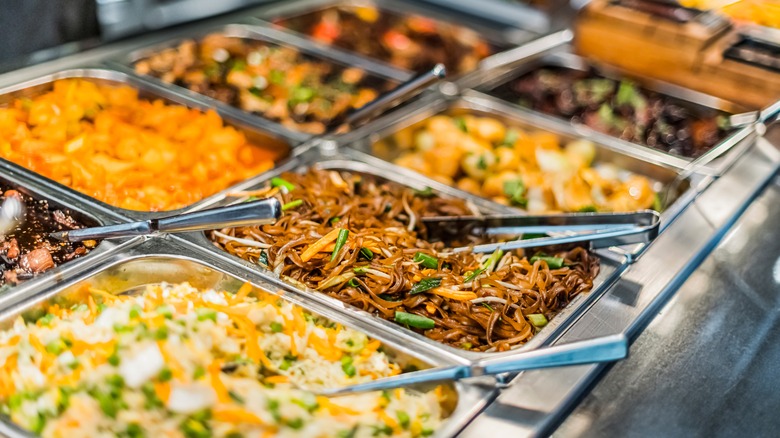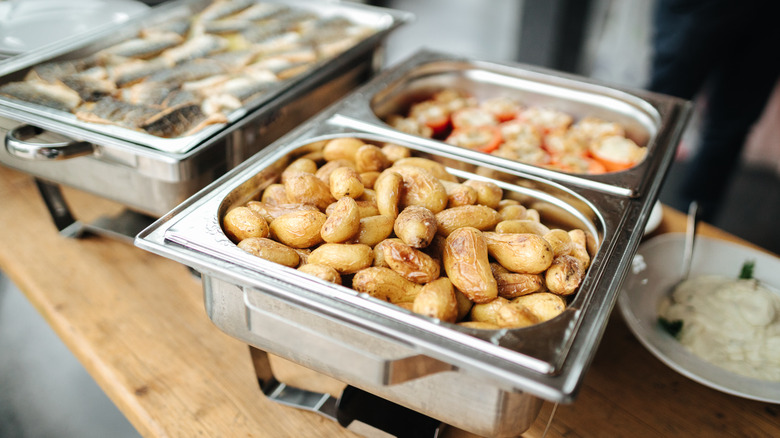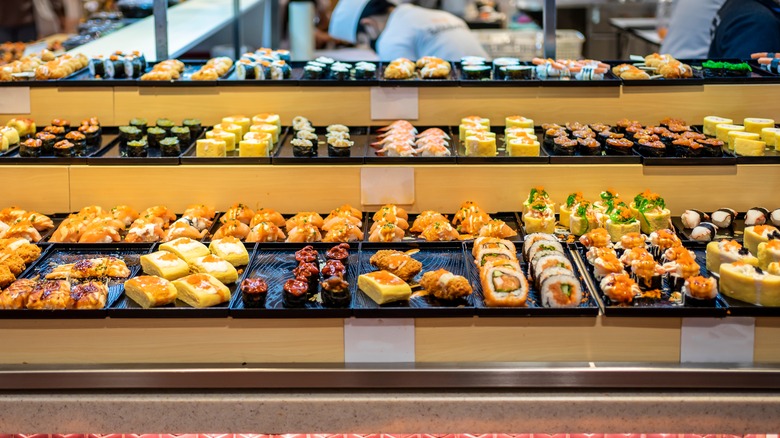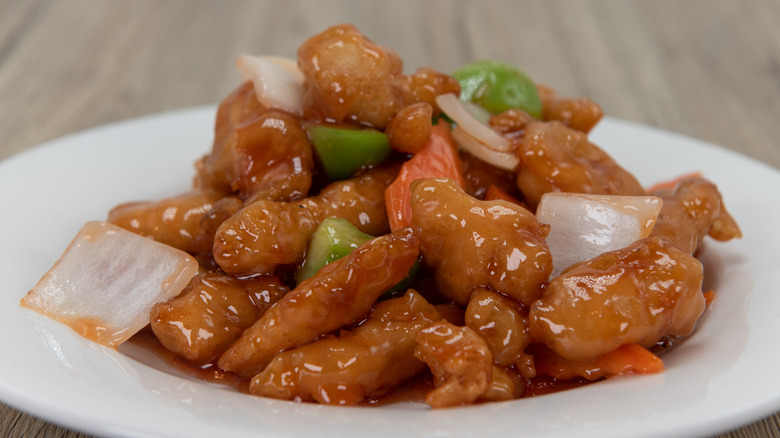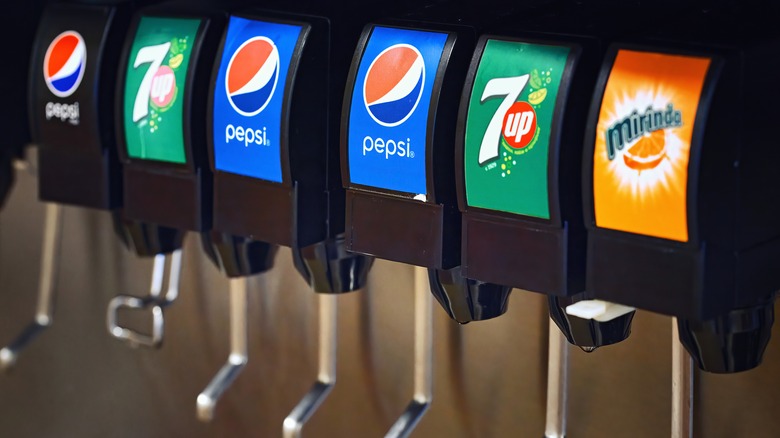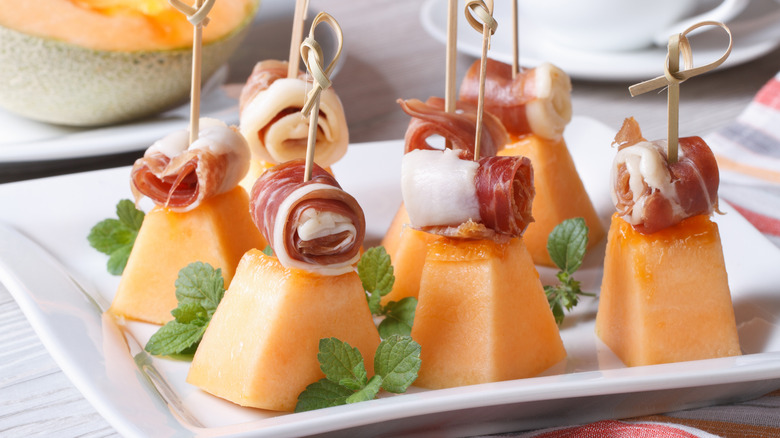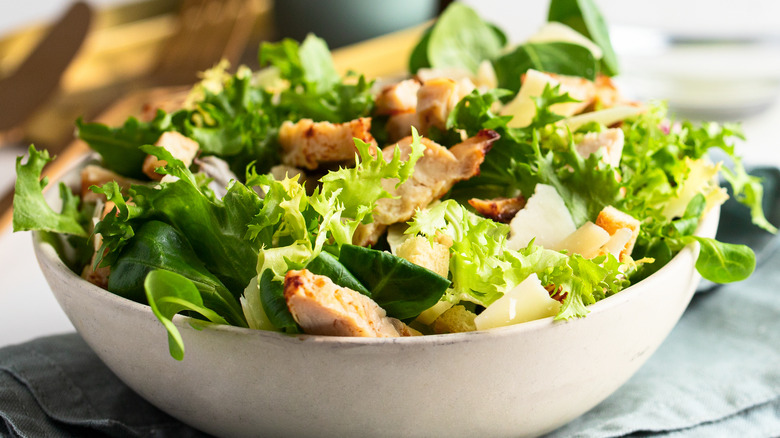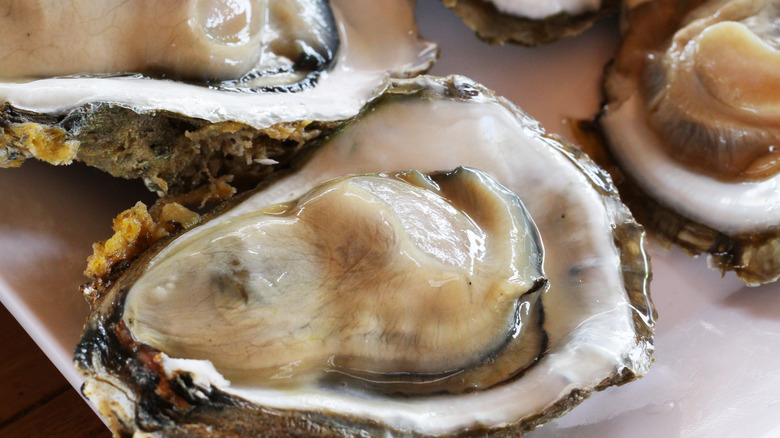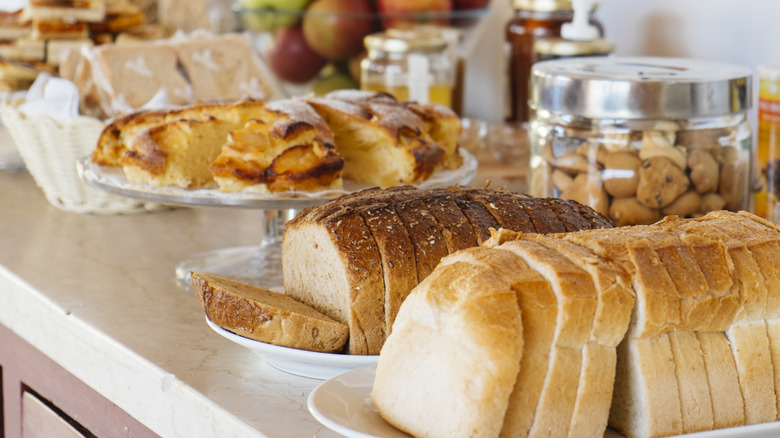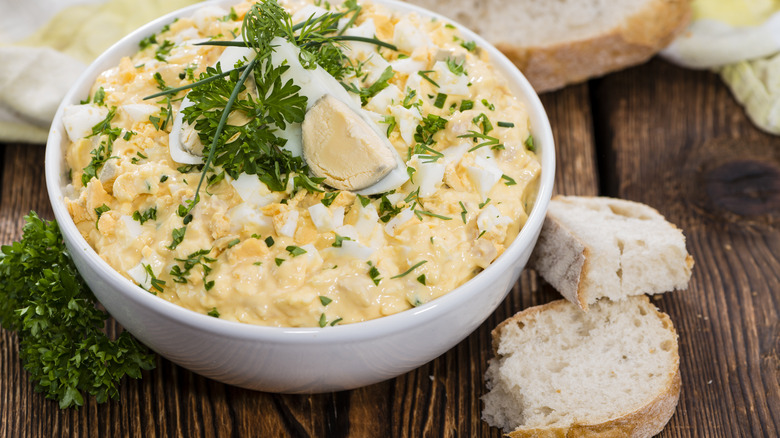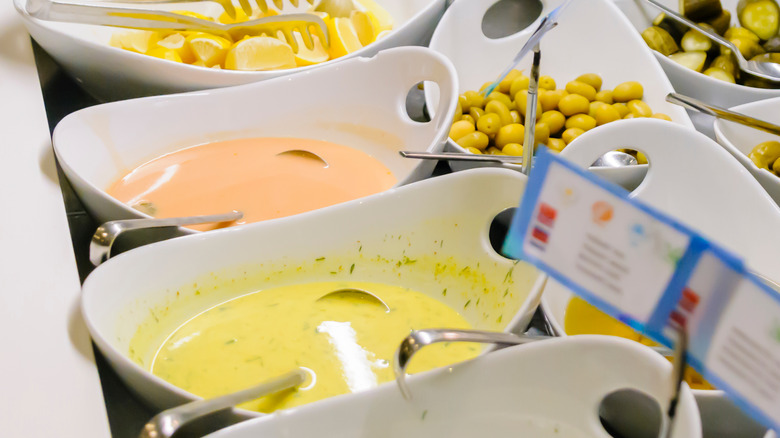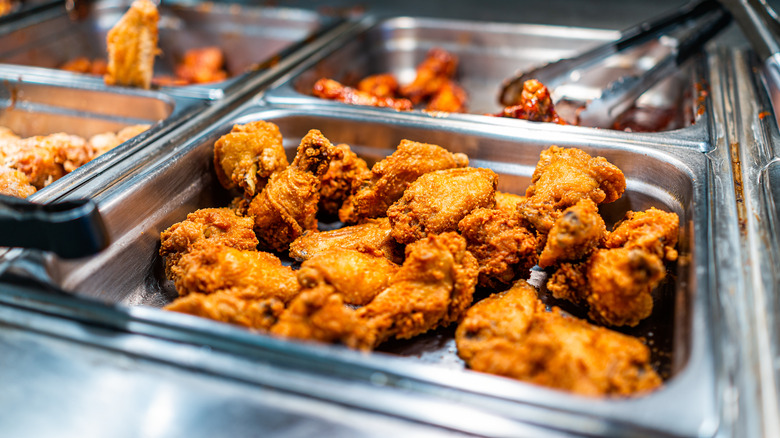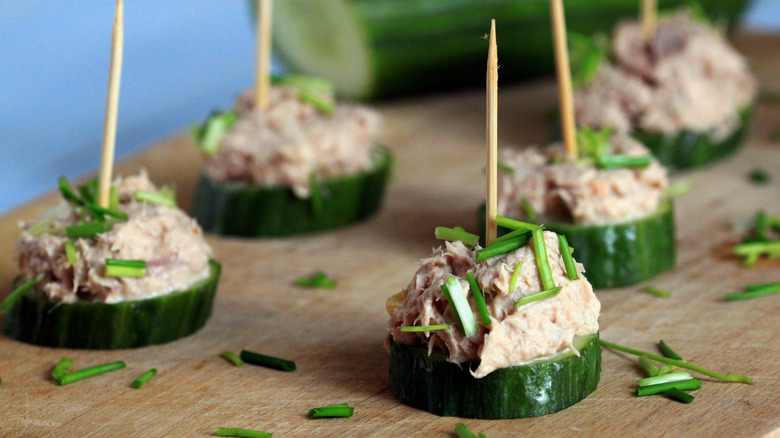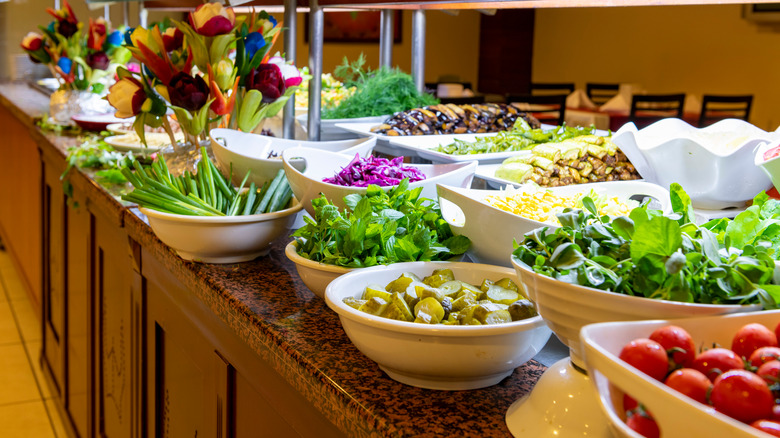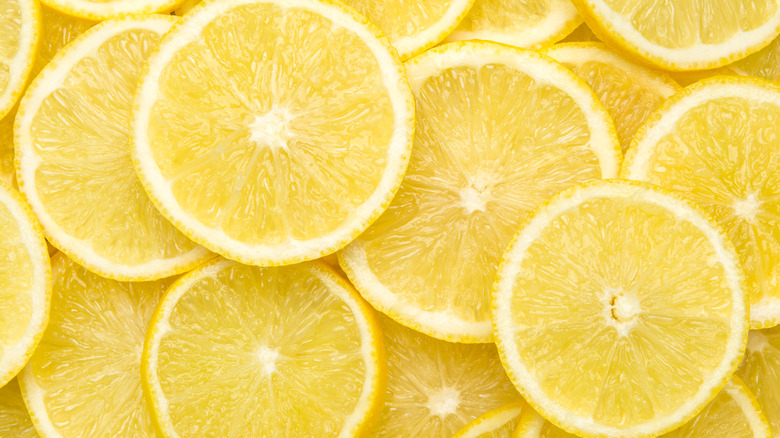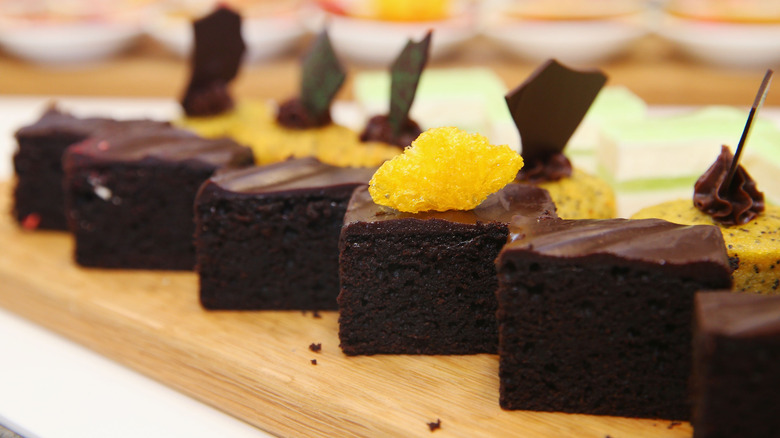15 Foods You Should Avoid At A Buffet
The buffet industry is substantial. In the United States, buffets generate about $8 billion in revenue annually. It's not hard to figure out why these restaurants are so popular. All-you-can-eat offerings — where the customer pays a set price and piles their plate high with their favorite foods — represent the ultimate value for some people. If you have a big appetite, you get to head back up for more food as often as you want.
Buffets are also a great opportunity to load up your dish with more expensive items, get a meal that's potentially worth more than what you paid for it, and gain a sense of satisfaction for your trouble.
However, while there are many good things about buffets, it's easy to get tripped up. There are several popular buffet food items that you might want to skip. These items may carry a higher risk of being unsanitary, be lower in nutritional quality, or fill you up too quickly. We know all of the buffet items you should avoid. Grab your plate and let's get started.
1. Potato-based dishes
Have you ever stopped to inspect the layout of your local buffet? If you haven't, we recommend taking a closer look. It's pretty common for buffets to place foods made of potatoes, or other carbohydrates, at the start of the line-up. These dishes — which could include French fries or mashed potatoes — are designed to fill your plate and your belly fast.
Buffets do this because these dishes are generally cheaper for businesses to produce. As the customer, you're subtly encouraged to eat more of these items by their placement. This means that you get full faster, leaving little room for the more expensive things the restaurant offers. This saves the buffet money. Sometimes, these types of food are also accompanied by larger spoons or ladles, encouraging patrons to take more. Pricier foods, on the other hand, are put out in smaller portions with smaller serving utensils.
To avoid falling into this trap, try to skip potato dishes when you first head up to the buffet trays. Seek out the foods that will give you more bang for your buck, like dishes made with meat or seafood. Once you're sure you've got your money's worth, go back for the potatoes.
2. Sushi
In the world of choices that buffets offer, sushi can feel like a straightforward option. Satisfying yet light, a few plates of sushi can allow you to walk out the door without feeling as bloated as you normally would after a big meal.
However, buffet sushi and sashimi can leave you with a serious bellyache. Sushi that has raw fish in it can be a breeding ground for pathogens that cause food poisoning. A spokesperson for the Academy of Nutrition and Dietetics, Lauri Wright, explained this to Reader's Digest: "Without cooking, the fish may harbor such bacteria as salmonella, vibrio, and some parasites." This only gets worse when the sushi is served in a setting where multiple customers are potentially poking, prodding, and inspecting it. This is because there is no way to know whether your fellow customers have washed their hands or not.
But it gets worse. The longer that food like sushi sits out in the open, the riskier it gets for consumption. If you're really craving a sushi fix, it could be a better choice to get it in a restaurant where it's freshly made to order.
3. Sweet and sour dishes
Few cuisines have been championed in buffet form as much as Chinese American food. In the U.S., it's not uncommon to come across a joint full of steaming platters of noodles, crab rangoons, and General Tso's chicken. But if you're hitting up your local Chinese buffet, try to avoid anything sweet and sour.
These dishes — which often contain deep-fried pieces of meat submerged in a syrup-like sauce — can be abundant in sugar and fat. Just one serving of sweet and sour chicken can contain over 1,500 calories, almost 90 grams of fat, and around 80 grams of sugar. If you're heading back to the buffet for a second helping, those numbers are only going to grow.
You might want a sweet and sour dish to add protein to your meal. But it's wise to consider the other buffet options available if you want to make a healthier choice. Try to avoid anything already dredged in sauce, breaded, or deep-fried. Lean options like chicken breasts or pork cutlets are always good, provided that they don't look like they're swimming in oil.
4. Soda
No meal is complete without a drink to wash it down. But if you generally go for a soda at your local buffet, you might want to cut back on how much you drink.
The large glasses that buffet restaurants often provide might seem generous, but it's all part of a ploy for them to save money. Soda generally costs eateries very little, which is partly why this type of drink is served in abundance. But also, the more soda you drink, the more full you'll get. That's exactly what buffet restaurants want you to do. Drinking soda helps you to eat less of a buffet's more expensive items, saving the business money.
We should also remember how sweet soda can be. The average can of soda contains 7 to 10 teaspoons of sugar. If you're having multiple glasses of soda, you could be rapidly increasing your body's sugar levels. Short-term, this can cause you to crash and become suddenly seriously tired. Long-term, ingesting high amounts of sugar regularly can increase your risk of developing chronic conditions like type 2 diabetes, per Healthline. Remember, you went to that buffet to eat. Don't get sidetracked by your beverage.
5. Cantaloupe
If you're looking to eat something a little bit lighter, all-you-can-eat buffets can be pretty discouraging places. It can be hard to find a healthy option at these businesses. That's why opting for fruit may seem like a smart move. But with cantaloupe, it's best to avoid this fruit entirely.
Cantaloupe, as well as other melons, are known to harbor bacteria. Other fruits have a higher acidity that helps them kill off any nasty bugs. But cantaloupe does not, explains the University of Wisconsin—Madison. That means that bacteria like Salmonella can cling to its surface more easily, heightening the risk of food poisoning. Salmonella infection is no joke. As well as causing cramping, fever, and vomiting, it can also be seriously dangerous and even life-threatening for some individuals.
If you do opt for a slice or two of cantaloupe at your buffet, examine it carefully before putting it on your plate. Cantaloupe should be at a chilled temperature, as leaving the fruit at room temperature increases its chances of becoming harmful. Also, make sure that you're not picking up any pieces that look bruised or darkened.
6. Chicken salads
When you find a salad with a protein element at your local buffet, it can feel like a big win. If your buffet has a chicken salad, you might be tempted by this combination of lean proteins and leafy greens. Unfortunately, this dish could be a hotbed for bacteria.
Proteins like chicken — when placed in a salad — are especially conducive to pathogens. This is due to the salad's moisture and pH level, explains Gordon Food Service. Things can get even worse when chicken is combined with leafy greens like lettuce or spinach, as these ingredients supply the perfect conditions for E. Coli to thrive (via the Centers for Disease Control and Prevention). If the chicken salad has been sitting out at room temperature for hours, you're especially at risk.
But sometimes, the salad options at a buffet just look fantastic. If you must grab yourself some chicken salad, just make sure the ingredients feel cold. Once leafy greens start to go above 41 degrees Fahrenheit, their ability to grow E. Coli increases. Salad bar items should be temperature-controlled and stored over ice. If they're not, leave them exactly where they are, and choose something else to eat.
7. Oysters
If you're a fan of the finer things in life, you might view buffets as an opportunity to get a little bit fancy. When oysters are on the menu at an all-you-can-eat joint, it's hard to pass them up.
While this seafood item is one of the classiest things you can eat at a buffet, it's also one of the riskiest. Raw oysters are especially prone to contamination from Vibrio bacteria, which can cause a form of food poisoning called vibriosis. Vibriosis can cause classic symptoms like vomiting and diarrhea, but it can also be particularly harmful. The disease kills around 100 people each year in the U.S., per the CDC. Buffets are a hotspot for vibrio-containing oysters. In 2009, over 50 people were afflicted with food poisoning from two different hotels, with buffet oysters believed to be the culprit.
The worst part is that contaminated oysters are impossible to tell apart from uncontaminated ones. These oysters can't be distinguished by their taste, look, or smell. This is a buffet item that you should absolutely avoid.
8. Bread
"Don't fill up on bread" is a phrase that most of us are familiar with. This is easier said than done, especially at buffet restaurants, which often sport an impressive selection of rolls and baguettes.
But we advise skipping the bread at a buffet since this allows you to fully take control. Buffets are designed to front-load their offerings with cheaper foods like bread. While you might like to think that you're not vulnerable to these buffet design tricks, science would beg to differ. A study published in the journal PLOS One indicates that three out of four times, we take the first item we see at a buffet. If that item happens to be bread— which it often is — you've just made a big dent in your plate space and appetite.
Wait until the end to pick up your carbohydrates. Start with the protein-based items at a buffet. These are not just likely to be more satisfying, but may well be of better quality.
9. Egg salad
Egg salad is a popular dish that is well-loved, making it a great choice for a buffet restaurant to serve. But spooning a portion of it out for yourself can put you at a higher risk of spending the next few days with food poisoning symptoms.
This dish is more likely to cause food poisoning because it's made of eggs, which are common carriers of Salmonella. Even when eggs appear to be fresh, they are still able to get you sick, warns the Food and Drug Administration. Eggs can become even more hazardous if they're undercooked, according to Kendra Busalacchi, a registered dietician (via The Healthy). If that egg salad is looking especially soft, you'd be smart to skip it.
Cold egg-based dishes, like egg salad, should be kept very cold at a buffet. For your safety, check to see if the egg salad is being kept on ice. You can also ask employees how long it's been on the serving dish before you dive in. If the egg salad at your buffet is being kept at room temperature, you should avoid it completely.
10. Condiments from trays
While a meal doesn't strictly need condiments to shine, these ingredients certainly don't hurt. For the sauce-heads out there, buffets are the perfect opportunity to indulge in as much ketchup, hot sauce, mustard, and mayonnaise as you can fit on your plate.
But if condiments are being dished up in a tray, you should give them a wide berth. Shared condiment trays are likely to harbor bacteria, explained microbiologist Jason Tetro to CBC: "If they are just open and there are spoons and things like that, then there's a very good likelihood that people will get their fingers in there." This results in potentially unwashed hands being near condiments and in contact with serving utensils. Both of these things can make contamination more likely.
Tetro says that observing how the condiments are served indicates how well the establishment is keeping on top of its hygiene. If condiments are being served from a pump, that's slightly better news. But your best bet is to opt for buffets that use individual sachets or contactless condiment dispensers. If not, it's probably best to skip the ketchup entirely.
11. Deep-fried foods
Although some buffets make it their business to offer a range of healthy options, other ones go big on the more indulgent items. In the latter type of restaurant, you're probably going to find a fair amount of deep-fried foods.
However, we recommend that you limit the number of deep-fried items you grab. Foods made by being fried in copious amounts of oil are some of the unhealthiest dishes you can eat. They can even raise your risk of developing heart disease and type 2 diabetes. "Fried foods may influence risk of these diseases through several key risk factors: obesity, high blood pressure, and high cholesterol," doctor Leah Cahill told WebMD.
Deep-fried foods can also build up a chemical known as acrylamide, which can potentially cause cancer in certain individuals. While acrylamide is generally well-tolerated and may not be harmful in smaller quantities, it's important to try and moderate your consumption of it. This includes eating less fried foods.
12. Tuna
The choices offered at buffets can be overwhelming. If you're struggling to pick something you know you'll enjoy, it's hard to go wrong with the familiar dish of tuna salad. But in all-you-can-eat establishments, tuna salad can be risky business.
"Tuna has to be kept at a colder temperature than other types of fish because it's especially susceptible to certain types of bacteria," nutritionist Rene Ficek told The Healthy. Tuna salad that's been sitting at room temperature for two hours at more has a higher chance of becoming harmful, per Still Tasty.
If the buffet table has fresh tuna or tuna steaks, they could be even more dangerous. Improper storage of fresh tuna can lead to it spoiling. This can cause scombroid poisoning when eaten, according to the California Department of Public Health. Scombroid poisoning is a form of food poisoning that involves symptoms like vomiting, rashes, and trouble swallowing. Tuna that causes scombroid can sometimes be identified by its off taste, smell, or appearance. However, sometimes it can be invisible.
13. Salad toppings and dressings
The salad bar at a buffet is always a popular area. If you're anything like us, you'll flock to this area because of all of the toppings and dressings it has that you wouldn't normally have at home.
But those bacon bits, and ladles of Caesar dressing you're pouring over your salad, are probably not going to make for a healthy meal. Let's start with the dressings. "The problem with restaurant dips and dressings is that we just don't know the quality and quantity of the ingredients that they use," nutritionist Lily Soutter told Cosmopolitan. An innocent-looking bowl of dressing could be abundant in hidden sugar and sodium, making an otherwise-healthy bowl of salad a nutritional nightmare.
The same goes for salad toppings. Croutons may fill your salad with an unbeatable crunch, but they'll also fill it with calories and fat. Maybe unsurprisingly, bacon bits are also not great for you. They are not only fairly fat-heavy but are also potentially full of processed foods. If you're going to the trouble of trekking to the salad bar in pursuit of health, don't hamstring yourself with these avoidable dressings and toppings.
14. Lemon slices
A slice of lemon can be the difference between a regular drink and a slightly more exciting one. However, these small slices of lemon can be potentially dangerous: dropping a piece of lemon in your drink can flood it with bacteria.
A study published by the National Library of Medicine examined the level of contamination on the average restaurant lemon slice. In an experiment, it was found that around 70% of restaurant lemon slices had bacteria growing on them. This is bacteria that — once in your drink — goes straight into your stomach, potentially causing infection or illness.
This contamination is even more likely in buffet settings, where lemon slices are cut and left out for patrons to pick up themselves. Don't think that bacteria will be killed off if you're placing the fruit in an alcoholic beverage. Even in the highest-proof alcoholic drinks, harmful pathogens are still able to survive and may be able to cause damage, as shown in a study published by the Journal of the American Medical Association.
15. Dessert items
If you've ever left a buffet disappointed that you didn't inspect the dessert table, you're not alone. We've all been there. But that may not be the worst mistake you've ever made, when you consider what eating those desserts may entail.
Desserts can be a particularly significant source of fat, sugar, and calories. As well as this, these calories can be especially easy to consume. Our bodies have a mechanism that means that we can remain hungry for sweet items even after consuming a lot of savory foods, something known as sensory-specific satiety (via HuffPost).
This essentially means that it's easy to boost your calories far beyond what you'd normally eat, especially at a buffet, where rich dessert items can be plentiful. Although it can be tricky to do, you're far better off going for a healthy choice for dessert, such as yogurt or fruit. Alternatively, you could make healthier choices during the savory part of your meal.
